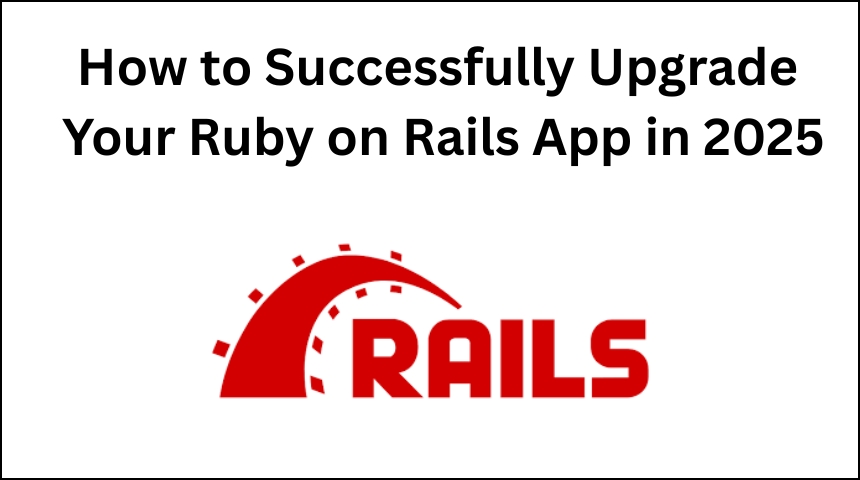Ruby on Rails has always been a favorite among developers for building clean, maintainable, and scalable web applications. But with every major release, new features, performance improvements, and security patches are introduced — which means staying on an older version isn’t just a missed opportunity, it could be a liability.
At Atharva System, we’ve helped clients across the globe modernize their legacy Rails applications. In this guide, we’ll walk you through the essentials of upgrading your Rails application efficiently and safely in 2025.
Why Upgrade Your Ruby on Rails Application?
Upgrading your Rails application isn’t just about staying trendy — it’s a strategic move. Here’s why it matters:
Compatibility: You get access to the latest Ruby versions and other gems that may drop support for older Rails versions.
Security: Older versions of Rails are often no longer supported, leaving your app vulnerable to exploits.
Performance: Every new version includes performance enhancements that can make your app faster and more responsive.
New Features: From Hotwire to better Active Storage, newer Rails versions are packed with features that improve developer productivity.
Key Pre-Upgrade Considerations
Before jumping into the upgrade process, take a moment to plan:
1. Audit Your Application
List out your Rails version, Ruby version, and all third-party gems currently in use. Tools like bundle outdated can help identify outdated gems that might not support the newer Rails version.
2. Check the Official Rails Release Notes
Rails upgrade guides and release notes often include breaking changes and deprecations. Get familiar with these so you’re not caught off-guard.
3. Update Your Test Suite
Make sure your test suite is solid. A well-maintained test suite acts as your safety net, letting you know what breaks during the upgrade.
Step-by-Step Upgrade Strategy
Here’s how we at Atharva System typically approach a Rails upgrade:
1. Upgrade Incrementally
Avoid jumping multiple versions at once. For example, if you’re on Rails 5.2 and want to go to Rails 7.1, go step by step:
- 5.2 → 6.0
- 6.0 → 6.1
- 6.1 → 7.0
- 7.0 → 7.1
Each minor upgrade introduces fewer changes, making debugging easier.
2. Use Dual-Booting
With tools like rails-upgrade-checklist, you can run your application on two versions simultaneously to spot issues early.
3. Resolve Deprecations
Use rails app:update to apply the latest config changes and inspect deprecation warnings via your logs. Fix them proactively before they become errors in the next version.
4. Run Your Tests Frequently
Every step of the upgrade should be followed by a full test run. This ensures you catch regressions early.
5. Manual Testing is Key
Automated tests are helpful, but nothing beats manual QA for edge cases. Validate forms, user workflows, file uploads, email flows, etc.
Common Upgrade Challenges (and How to Solve Them)
- Gem Compatibility Issues
Some gems may not support the latest Rails versions. Look for maintained forks or consider replacing outdated gems with alternatives. - Configuration File Mismatches
Runrails app:updateand carefully review the diff before applying changes. - JS & Frontend Breaking Changes
Rails 7 introduced default support for import maps and Hotwire. If you’re using Webpacker, this could affect your asset pipeline.
Post-Upgrade Checklist
After the upgrade is done, double-check the following:
- All tests pass
- No deprecation warnings in logs
- Production config is updated
- Asset pipeline is working as expected
- Monitor performance metrics after deployment
How Atharva System Can Help
Upgrading Ruby on Rails can be time-consuming, especially for large or mission-critical applications. At Atharva System, we offer:
- Rails Upgrade Consulting
- Legacy Code Refactoring
- Security Patch Management
- Performance Optimization
- Long-Term Maintenance & Support
Whether you’re looking to upgrade to the latest Rails version or modernize your entire tech stack, our experienced team is here to make the transition smooth and worry-free.
Final Thoughts
Staying current with Rails isn’t just about accessing new features — it’s about keeping your app stable, secure, and scalable. With the right planning and a step-by-step approach, a Rails upgrade doesn’t have to be painful.
Need help upgrading your Rails app? Atharva System is just a call away. Let’s bring your application up to speed — and future-proof it for years to come.


